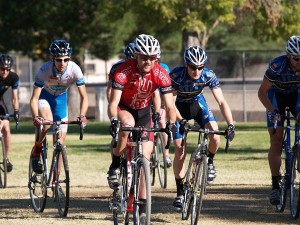Live High, Train Low – Part 1
During the months of September and October I had the privilege to partake in a scientific study focused on the Live High, Train Low (LHTL) altitude training protocol. Many previous research studies have confirmed that endurance athletes following the LHTL protocol outperform athletes using any other altitude training protocol. The particular study that I was involved with was organized by Dr. Carsten Lundby of the University of Zurich. He and his team of researchers sought to define the mechanisms by which the LHTL protocol allowed elite cyclists to outperform other elite cyclists who lived and trained at low elevation. Sure LHTL might work, but how and why does it work? This is what the study sought to quantify.
There are three ways in which athletes can adhere to a LHTL protocol. 1) There are some geographic locations that allow athletes to live at high altitude and commute to lower altitude to do their training. Some athletes are willing and able to take advantage of this in places such as Park City/Salt Lake City, Utah, or Summerhaven/Tucson, Arizona. Living above 8000 feet and training below 4000 feet has been thought to provide athletes the best results. 2) Athletes living at high elevation and without access to lower elevation for training can do their high intensity interval work with supplemental oxygen in a laboratory setting. This tactic was employed by US MTB National Champion Todd Wells as he prepared for Nationals from his hometown of Durango, CO. 3) Most athletes happen to live at elevations below 4000 feet so a altitude tents can allow athletes to sleep at simulated higher elevations. Going beyond a tent system, entire rooms can be converted to altitude for those willing to spare no expense. National sporting programs sometimes convert dormitories into altitude facilities so that athletes can follow LHTL protocols when preparing for the Olympics or other high priority competitions.
Converted dorm facilities were used for the study. Our training was done in local area at elevations varying roughly between 2500 to 3500 feet. Subjects in the test group slept in hypoxic rooms at a simulated 9200 feet, while the control group slept in normoxia at the actual elevation of 3500 feet. Following a two week baseline testing period, the intervention phase lasted four weeks, during which 16 hours per day were spent inside the altitude rooms (actual for the test group, placebo for the control group). During the final two weeks of the study all subjects went without the altitude stimulus while follow up tests were conducted. All subjects were asked to train “as normal” for the entire duration of the study so that the effects of the altitude intervention would be in addition to any effect of our normal training routine.
The testing was thorough and frequent. Blood testing, performance testing in the lab, and even two muscle biopsies were collected along with daily training data. Researchers collected baseline values, values during the intervention phases, and follow up values. The complete findings will be published in the scientific journals sometime during 2011 and as of now, the researchers are still crunching all of the data collected so I’m still waiting to see my own testing results. More details will come as they are available.


